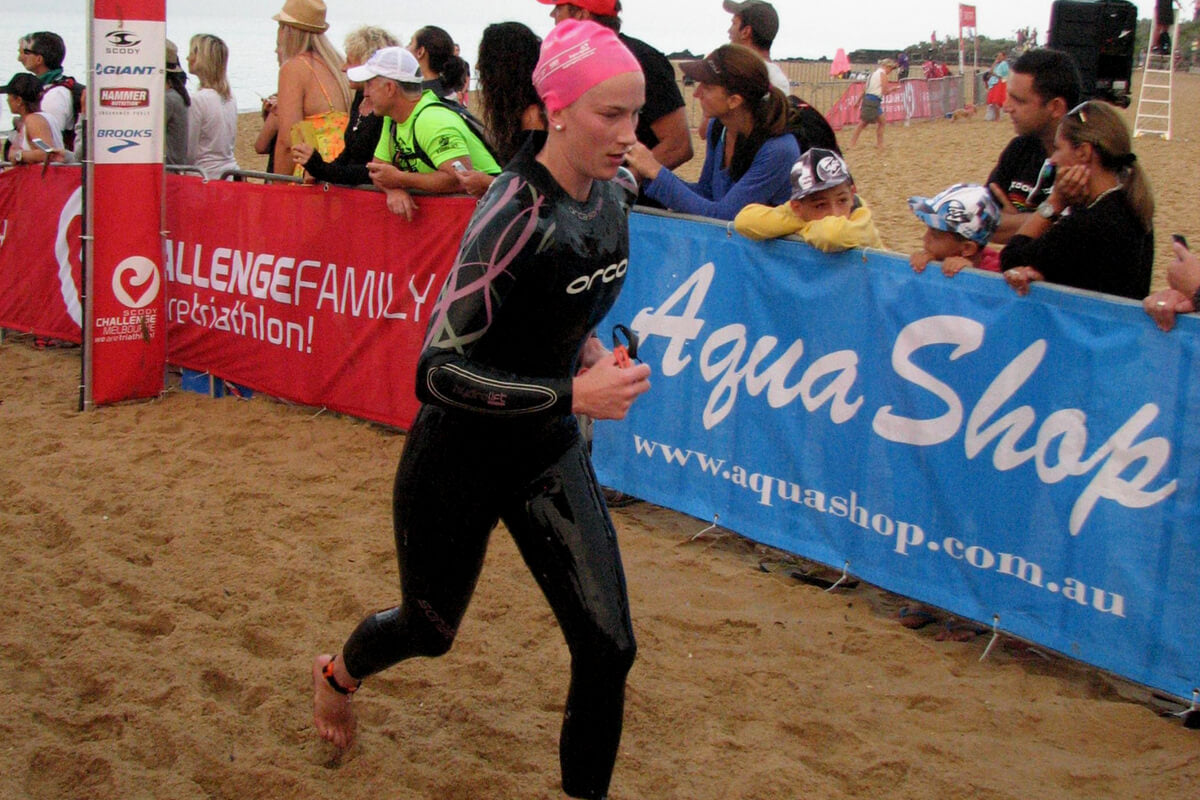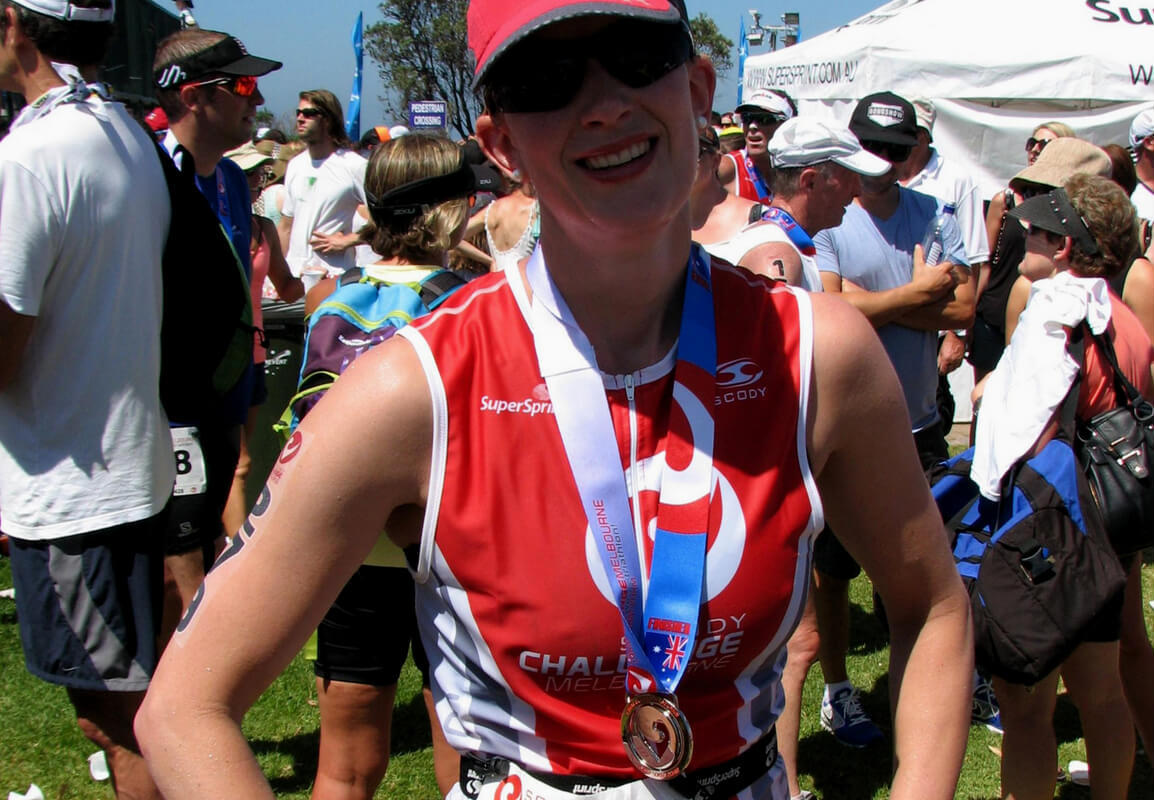How to finish your first Ironman triathlon - tips from an Iron-woman

For Sophie Anna Mebalds, it took a year to get ready and 11 hours 29 minutes to complete one of the toughest endurance races in the world: the Ironman triathlon.
Sophie is a 33 years old teacher from The Dandenong Ranges, near Melbourne, Australia. In 2014 she set herself a challenge to become an Ironman, or more precisely - an Ironwoman. Asked
She not only finished it. Sophie did it under the
But with so many different races available - why Ironman?
The Ironman race is famous for its level of difficulty. It consists of three distances - a 3.86km swim, 180.25km bicycle ride and 42.20km run. Each distance is raced in that order and without breaks.
To reach the finish line, Ironman participants not only need an iron will, but also serious preparation. So, we sat down to talk to Sophie and find out everything - how she trained, how she kept herself going, and what it feels like to cross the finish line.

Preparation is everything
Sophie has always been active and liked physical activities, which was one of the reasons she became a sports teacher. But back in 2014, her love for sport motivated her to take up the challenge and start training for Ironman.
For the next 12 months, Sophie's daily life was adjusted to her training schedule. On the evenings and weekends when people went out to socialize, Sophie went running, cycling or swimming.
''Knowing that I've signed up for the race and that it was a goal of mine to complete it kept me motivated. I also have a lot of friends who have trained and raced for various sports at high levels - they encouraged me and were understanding when I had to swap a weekend gathering with them for another workout,'' Sophie tells us.
Her training plan was intense and planned to details: she swam three mornings in a week, then went for a long run on a Saturday and a long bicycle ride on a Sunday. During the week she did shorter rides and runs

''For a first-timer like me, the Ironman website was helpful in reaching training goals. I found a training plan on their website that enabled me to compare my training against their recommendations.''
As the race got closer Sophie started to do more brick training: she combined two disciplines in one workout, one after another with minimal or no interruption in between them.
For example, she would swim 2km, then go for a 15-20km run. Other times, she would do a 2-hour bike ride, followed by a 1-hour run. Then, to help her replicate the ride in the race and to build up mental training, Sophie started to do long laps on her rides, e.g., she would do 2-3 50km laps of a flat course without breaks.
With such an intense training schedule came a great appetite. ''I was hungry all the time,'' Sophie laughs. ''Since I have always eaten pretty healthy food, I didn't change the things I was eating, just ate a lot more!''
Here's what her typical menu would look like:
Porridge for breakfast
Different types of pasta and rice dishes for lunch
Stir fry or steak and salad or veggies for dinner
Lots of bananas and other fruits, as well as nuts between the meals
11 hours and 29 minutes of racing
In the morning of the race, everyone arrived earlier to pick up their numbers, as well as to get themselves and their equipment ready.
''I didn't have all the newest equipment, and I basically raced in what I had trained in,'' Sophie admits. ''I had bought a second-hand wetsuit and borrowed a time trial bike off a friend who had done Ironman the year before. I kitted the bike out with a proper speedo, drink cages and food pouches,'' she explains.
Sophie suggests focusing on comfort rather than the newest gear, especially if that's your first triathlon. Professional Ironman equipment can cost up to $17000, though as a beginner you probably won't feel much of a difference. Of course, it's an entirely different story for pro triathletes.

The start was given, and hundreds of participants - pros and amateurs side by side - went into the race. It started with swimming, then, out of the water, participants got on their bikes, and finally straight away into their running shoes.
To help herself stay hydrated and her nutrition up throughout the whole race, Sophie had prepared ''goodie packs'' for each of the distances. ''I had done a couple of smaller lead-up races, like half Ironmans, so knew what I needed to pack for each leg of the race,'' she says.
For the run, she would have a race belt with sports drinks, energy gels, and glucose tablets. For the ride, she had prepared more substantial energy bars, along with energy gels and more drinks in her three bottle cages on her bike.
''Throughout the entire race, as I was very conscious of staying hydrated as this was key to being able to finish the race,'' she explains. ''Besides that, I also had to make sure that I don't run out of energy. So, during the bike ride I ate half a banana at each of the checkpoints, and in the run, I had either an energy gel or glucose tablet every 5km, even if I didn't feel tired,'' Sophie tells us.

Looking back, Sophie admits that the most difficult part of the race was the very last 7km of the run. That's when the finish seemed so close yet so far at the same time.
''I always break races up into smaller sections which I focus on. I think about distances that I have left to go and relate it back to a training run or ride. For example, I would think ''okay, now I've got 7km to go - that's only from home to *someplace*…I can do that!”
That's how Sophie kept herself going.
''I was just trying to get there, and then I came around a corner and there were about 9 of my mates all there, ringing bells and cheering me on. It was awesome and gave me the lift I needed to overcome my exhaustion and reach the finish line.''
Final words
''That feeling when you cross the finish line...it's hard to describe. I was really happy that I had done it, and I was also relieved. I was satisfied with my result, which was under my goal time,'' Sophie says proudly.
Asked what the Ironman experience taught her, she answers without thinking much - ''whatever you set your mind to, if you work hard enough you can do it.''
Then she adds:
''For me, it was all about the journey. The race was great fun and I loved it. But the training I completed in the lead up to it - it was awesome!''





























Leave a comment